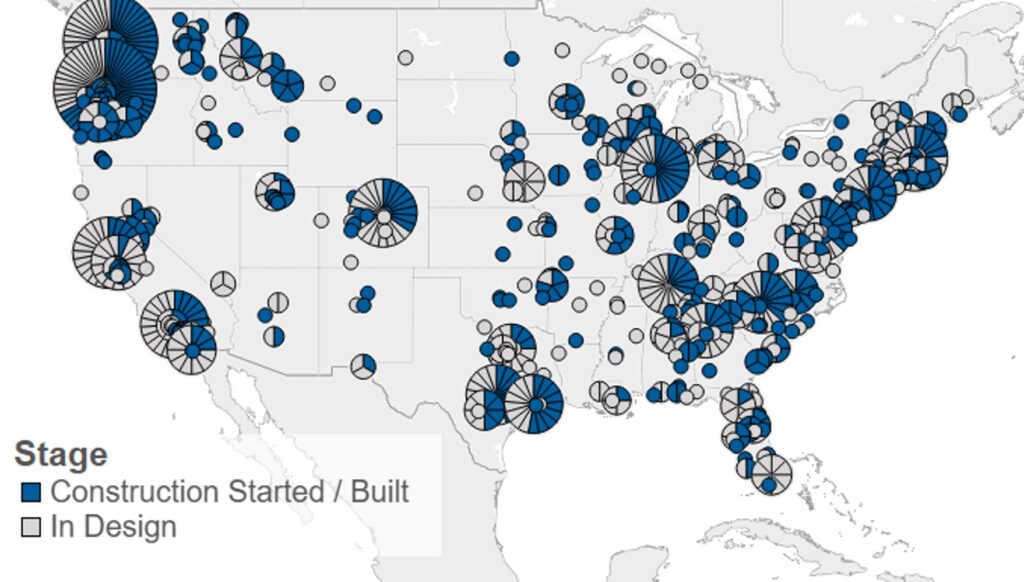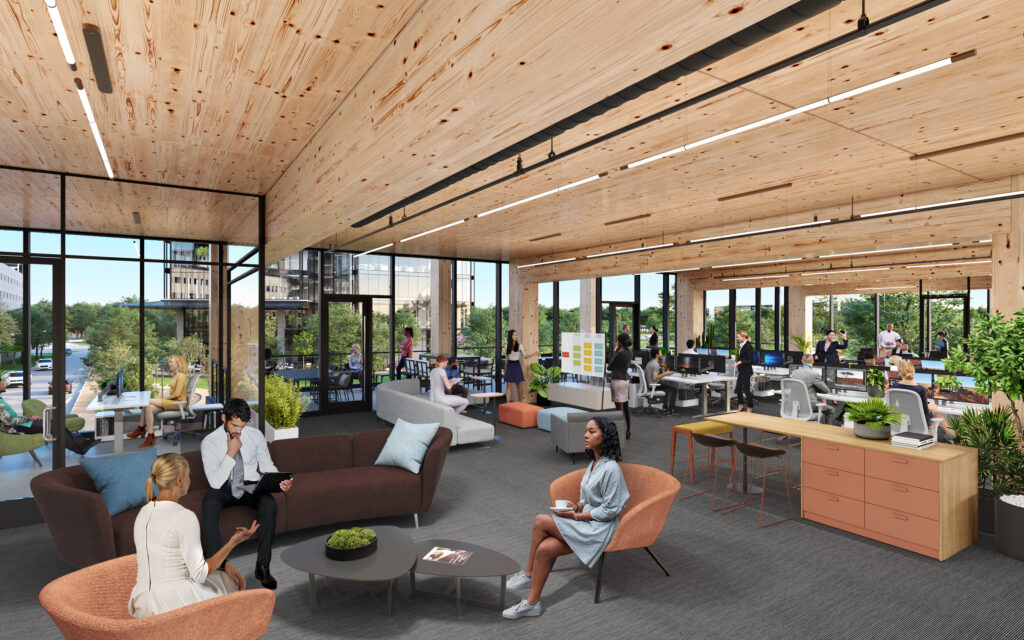
By Pete Kobelt, Director of Mass Timber Solutions, Structure Tone Southwest
Cross laminated timber, or CLT, traces its origins to advances in wood processing and fabrication about 30 years ago in Austria, Germany, and Switzerland. Ten years later, the publication of Holzmassivbauweise (“solid wood construction”) provided the AEC industry with national guidelines for use of CLT in multistory buildings. The guidelines stimulated significant interest in countries with strong forest management histories, high- performance building energy standards, and an emerging interest in reducing the carbon footprint of high embodied energy construction materials like concrete and steel. By removing and sequestering carbon from the atmosphere during growth, trees provide a vast renewable resource that reduces the carbon footprint of buildings while simultaneously offering the opportunity to build faster by using prefabricated components and to deliver buildings that, in turn, use less energy to heat and cool.
The idea of growing our buildings really starts to take hold when we consider a case study at the University of Arkansas in Fayetteville. The State of Arkansas has 19 million acres of trees that grow 71 tons of wood fiber every 60 seconds. Two recent significant mass timber projects on campus utilized 5,000m3 (175,00ft3) of mass timber components. That volume could be grown in the state’s forest in just three hours. So in the time it takes to deliver one truckload of timber from the factory to the jobsite, the forest would have already replaced all the wood fiber needed for both buildings.
In the US, the APA (American Plywood Association) published the APA PRG-320 Manufacturing Standard for Performance-Rated Cross Laminated Timber in 2012. This too stimulated a dramatic uptake of CLT in commercial construction. Today there are five mass timber component manufacturers/fabricators in Canada and another seven in the US, with more to follow.
WHY MASS TIMBER? WHY NOW?
As the construction industry faces acute and worsening skilled labor shortages, prefabrication and automated off-site construction offers numerous advantages. Precision-controlled factory environments with technologically advanced processing and fabrication equipment delivers extremely precise mass timber components and can run three shifts if warranted. The factory Katerra built in Spokane, Washington, which has now been purchased by Mercer International, has the capacity to produce 6,475,000ft3 of CLT per year, which equals 80,000,000 board feet of lumber, or 12,000,000sf of structural construction material. Putting that into a typical 6-story, 200,000sf mass timber office would equal 60 office buildings produced in the factory each year.

CLIMATE CHANGE & ESG
There can be no further denial about climate change. It is upon us with a vengeance and, in some cases, has already exceeded some of the most dire predictions. Harvesting and replanting smaller diameter timber resources reduces fuels and fire risk for our forests. As temperatures warm and droughts persist, the forests lose their innate ability to fight insects and become increasingly prone to catastrophic fire and the subsequent massive release of a carbon “bomb” back into the atmosphere. Placing value on our forests as forests and protecting them from development affords us a vastly renewable resource while protecting clean air and water when done mindfully and sustainably.

Innovation like mass timber design, engineering, manufacturing, and construction across the AEC industries can be leveraged to meet emerging and increasingly urgent environmental, social, and governance (ESG) goals. Most, if not all, of the major tech companies, auto makers, and corporations like Walmart are making profound commitments to reducing their carbon footprints. Walmart reimagined a significant portion of their new home office campus in mass timber, resulting in 2Msf of mass timber office, fitness center, and other amenity buildings, resulting in the largest mass timber construction project in the world. Others, like Microsoft, are even seeking carbon neutrality retroactive to their inception.
Commitments like these are no small tasks. Reimagining how they build, what they build with, and how they operate their buildings—including strategies like CLT—is critical to helping them achieve these ambitious goals.
